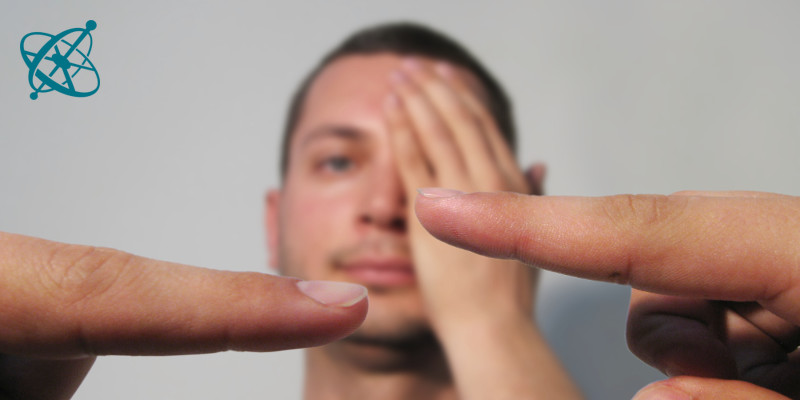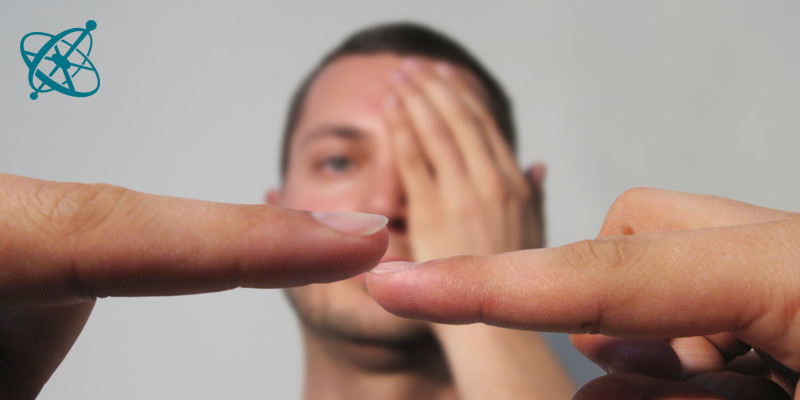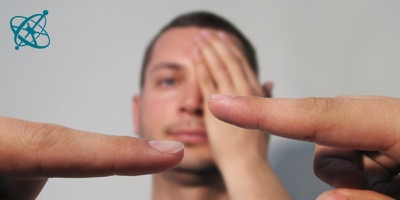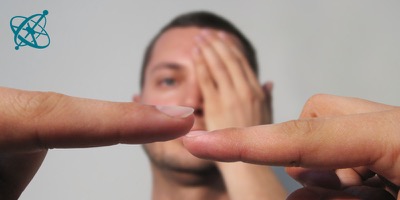 www.sciensation.org | Ciênsação hands-on experiments are published as Open Educational resources under a Creative Commons Attribution-ShareAlike 4.0 International License.
www.sciensation.org | Ciênsação hands-on experiments are published as Open Educational resources under a Creative Commons Attribution-ShareAlike 4.0 International License.
Make the fingertips touch!

Not so easy without stereo vision, is it?
Two eyes
We usually take 3D vision for granted. As with many things, we only note its value once we have to cope without.
Experience and understand the importance of stereo vision.
Our brain extracts 3D depth information from the differences between the two images our left and right eyes get to 'see'.
Close one eye. Then stretch out your left arm and point with your index finger to the right. Find a partner doing the same thing in front of you and try to slowly bring the two fingertips together without moving your head.
1. Why is it so much easier to do this with both eyes open?
2. Why does it help to move your head?
Does your left eye 'see' the same thing as your right eye?
› No.
How does your brain know which objects are closer and which are further away?
› A single image is not enough, but the differences between two perspectives provides this information.
When you move your head, does the eye 'see' the same image?
› No, it sees the scene from a different perspective. The brain can thus estimate depth from the differences between images from different head locations.
While we might not be immediately aware of the loss of 3D vision by closing one eye, the loss of depth information becomes evident when we attempt a task that requires it.
To be accurate, it is actually possible to gain depth information from a single perspective by using the focusing information. This technique is sometimes used to generated 3D images in microscopy, but the human eye is usually not trained to do the same.

